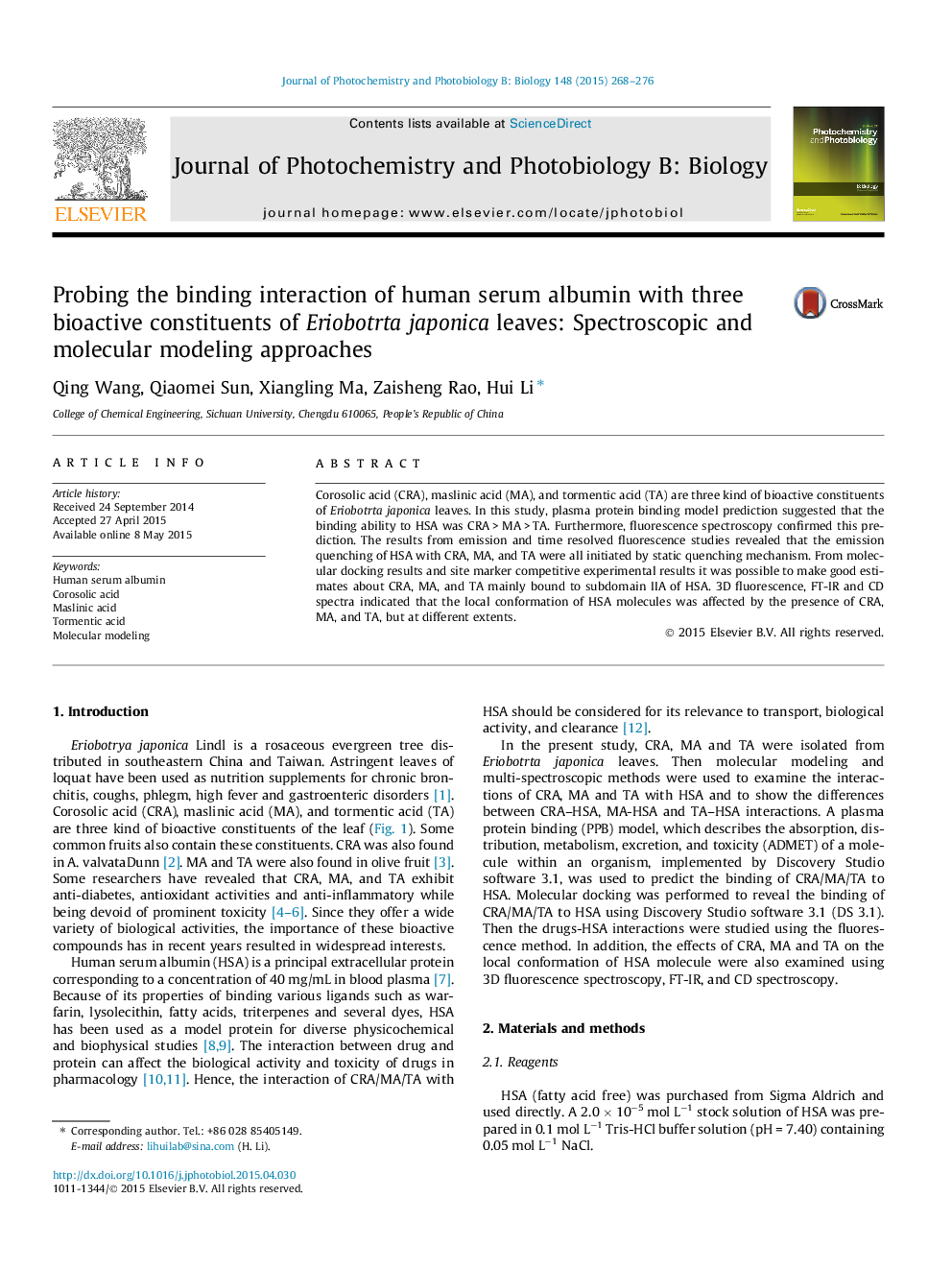| Article ID | Journal | Published Year | Pages | File Type |
|---|---|---|---|---|
| 29715 | Journal of Photochemistry and Photobiology B: Biology | 2015 | 9 Pages |
•This study was finished by adopting molecular simulation and experimental verification.•DS3.1 was used to analyze the binding ability and predict the possible binding sites.•The local conformation of HSA was changed at different levels by three drugs.
Corosolic acid (CRA), maslinic acid (MA), and tormentic acid (TA) are three kind of bioactive constituents of Eriobotrta japonica leaves. In this study, plasma protein binding model prediction suggested that the binding ability to HSA was CRA > MA > TA. Furthermore, fluorescence spectroscopy confirmed this prediction. The results from emission and time resolved fluorescence studies revealed that the emission quenching of HSA with CRA, MA, and TA were all initiated by static quenching mechanism. From molecular docking results and site marker competitive experimental results it was possible to make good estimates about CRA, MA, and TA mainly bound to subdomain IIA of HSA. 3D fluorescence, FT-IR and CD spectra indicated that the local conformation of HSA molecules was affected by the presence of CRA, MA, and TA, but at different extents.
Graphical abstractFigure optionsDownload full-size imageDownload as PowerPoint slide
